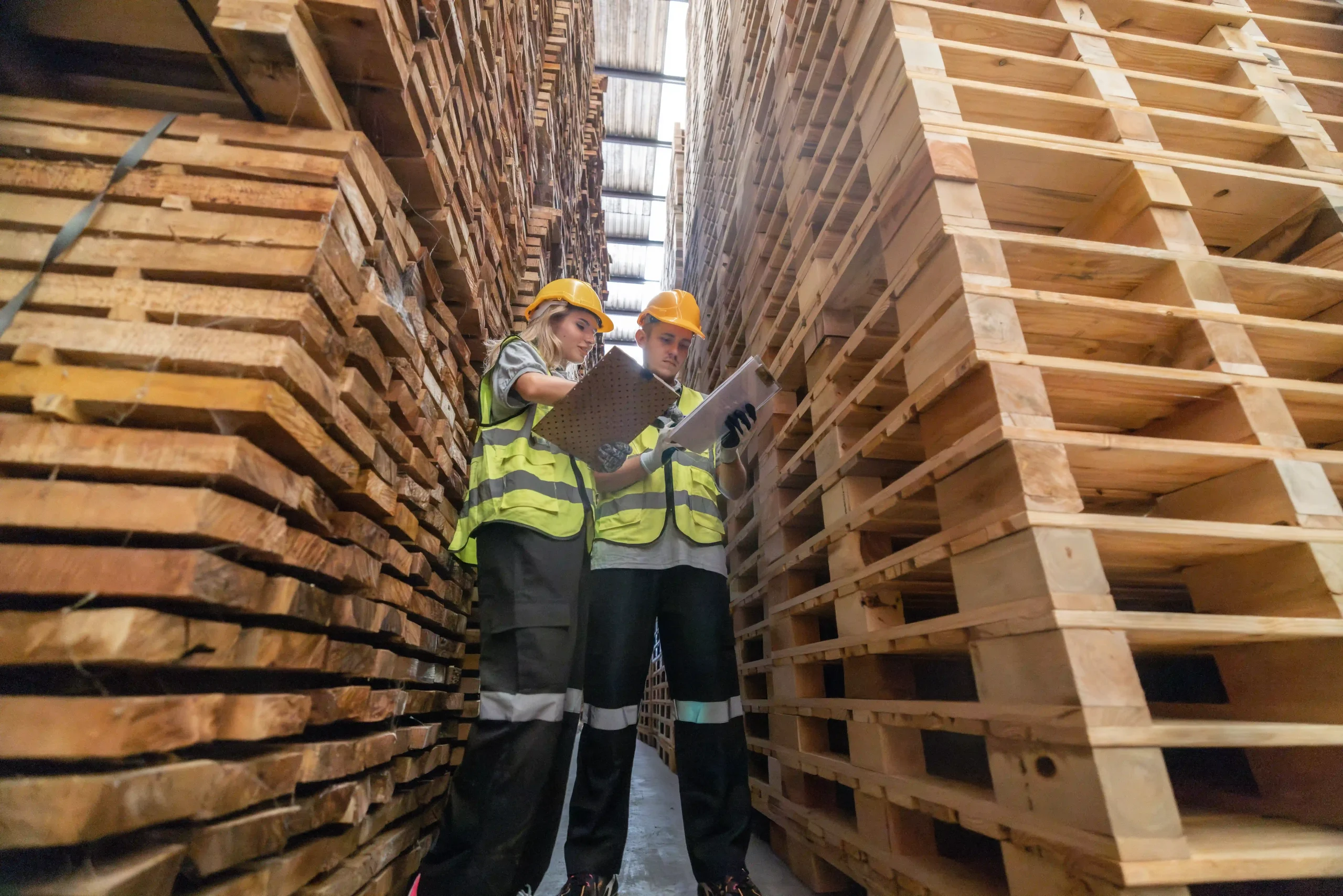Storing pallets safely in your warehouse protects your team and stock. Poor warehouse pallet storage causes thousands of UK accidents each year. Understanding pallet storage safety creates safer workplaces and improves supply chain efficiency.
Why Pallet Safety Matters
Warehouse safety impacts operations. Heavy items toppling cause injuries. Damaged pallets lead to lost stock and failed health and safety inspections. Proper warehouse storage helps reduce the risks whilst maximising storage space. The HSE’s Warehousing and Storage Guide sets clear standards for storing pallets safely in your warehouse.
Stacking Pallets Correctly
Floor stacking suits short-term storage. Pallet racking systems maximise space. Don’t exceed four pallets high. Always place heavier items at the bottom. Safe pallet storage requires good techniques. Inspect pallets before use – damaged pallets collapse under load. Look for cracked boards or loose nails. Stack pallets straight and level. Centre loads properly.
Safe Stacking Heights and Weight Limits
| Storage Method | Maximum Height | Weight Considerations | Inspection Frequency |
|---|---|---|---|
| Floor Stacking | 4 pallets high | Heavy items on the bottom | Daily checks |
| Pallet Racking Systems | Per system rating | Never exceed load signs | Weekly checks |
| Block Stacking | 3 pallets high | Check floor capacity | Before each stack |
Loading and Unloading
Proper loading and unloading prevent accidents. Use forklifts and pallet jacks. Train operators properly. Secure unstable loads with shrink wrap to prevent items shifting during storage.
Regular Pallet Inspection
You must regularly inspect pallets for warehouse safety. Daily checks spot problems early. Weekly pallet inspection should cover pallet condition and stack stability. Pallet racking systems need annual professional inspections. Keep written records proving safety compliance.
Managing Damaged Pallets
Never store pallets that are damaged. Even minor damage causes failures. Create designated areas, keeping damaged pallets separate. For large quantities, consider professional removal. Companies offering charged collections safely remove unwanted pallets. Inspect incoming pallets and reject damaged ones at delivery.
Safe Walkways and Training
Keep walkways clear. Leave space between stacks. Never block fire exits. Maintain good lighting. Everyone needs training to store pallets safely. Cover identifying damaged pallets, safe stacking heights, weight limits, and equipment usage. Provide regular refresher training.
Long Term Storage
For long-term pallet storage, environmental conditions matter. Moisture weakens wooden pallets. Keep storage areas dry. Protect from weather exposure. Temperature extremes cause problems.
Frequently Asked Questions
How high can I safely stack pallets in my warehouse?
For floor stacking, experts recommend four pallets high. Safe height depends on pallet condition, load weight, and floor quality. Follow manufacturer guidelines for pallet racking systems. Prioritise pallet safety over space efficiency.
How often should I inspect stored pallets?
Conduct daily visual checks. Perform detailed weekly inspections. Arrange annual professional inspections for pallet racking systems. Keep written records demonstrating UK health and safety regulation compliance.
What should I do if I find a damaged pallet?
Remove it immediately. Mark clearly and move to your designated area. Report damage to supervisors. Never use damaged pallets even for light loads.
Do I need special training to stack pallets safely?
Yes, training is essential for everyone handling pallets. Cover safe lifting, stacking methods, weight distribution, and equipment use. Regular refresher courses maintain high standards.
Creating Safer Warehouse Storage
Storing pallets safely in your warehouse requires commitment. Assess current practices and identify areas not meeting safety standards. Involve your team in improvements. When you regularly inspect pallets and maintain proper warehouse storage practices, you reduce the risks and protect your team while keeping your supply chain running smoothly. Professional services like charged collections help maintain an organised warehouse storage by removing damaged pallets efficiently. Combined with proper training and regular inspections, these practices create warehouses where teams work confidently and stock stays protected.




